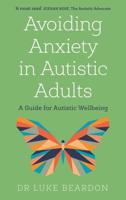Publisher's Synopsis
Sexual orientation (homo- vs. heterosexuality) is one of many sex differences observed in humans. Sex differences can result from differential postnatal experiences (interaction with parents, environment) or from biological factors (hormones and genes) acting pre- or postnatally. The first option is often favored to explain sexual orientation although it is supported by little experimental evidence. In contrast, many sexually differentiated behaviors are organized during early life by an irreversible action of sex steroids. In particular, the preference for a male or female sex partner is largely determined in rodents by embryonic exposure to sex steroids. The early action of these steroids also seems to affect sexual orientation in humans. Indeed, clinical conditions associated with major endocrine changes during embryonic life often result in an increased incidence of homosexuality. Furthermore, multiple sexually differentiated behavioral, physiological, or even morphological traits that are known to be organized by prenatal steroids, at least in animals, are significantly different in homo- and heterosexual populations. Thus prenatal endocrine (or genetic) factors seem to influence significantly human sexual orientation even if a large fraction of the variance remains unexplained to date. The possible interaction between biological factors acting prenatally and postnatal social influences remains to be investigated.












